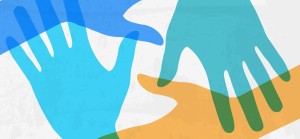Taking and Making Space
As hundreds of students gathered in front of Honnold-Mudd Library last Thursday, anticipating the beginning of the Blackout March in solidarity with marginalized people of color throughout the country and around the world, one of the organizers issued this reminder to the white allies in the group:
“You are here to support the space, not to take up space.”
While I think all of us who identify as allies of something are familiar with this concept, I can’t say I’ve heard it articulated in these exact words before. “Space,” in this context, holds two related meanings: as a definite singular noun, it refers to a platform for speech and action; as an indefinite, it refers more to an attentional resource, a sense of visibility and respectability implied to exist in a limited and unfair distribution. I would love to explore the ways in which social activism has redefined the concept of space, from the personal to the communal, but for the moment I will focus on the particular type of space that is most relevant to this discussion.
Safe spaces are necessary. Until all forms of prejudice and oppression are eradicated from the world and from the minds of individuals, this is not a negotiable point. So why are they so controversial, even among people who acknowledge the existence of institutional inequities? In my experience, people get defensive about privilege because they misinterpret it to mean “a total lack of any personal problems or life difficulties, let alone permission to express them.” Often, the same people who resent the implication that they experience fewer problems in life mock and disparage spaces that grant marginalized groups even temporary respite from the legitimate problems of racism, transphobia, anti-Semitism, and so on. By the same misguided rhetoric that frames trigger and content warnings as “coddling,” safe spaces are accused of sheltering students from the harsh realities of the outside world. This simply isn’t accurate. Of the many purposes that these spaces serve—discussion, healing, solidarity, intergroup education and debate, expression of emotions out of sight of those who might exploit them—none are particularly conducive to hiding from the world, because that’s simply not the point.
Likewise, while empathy and curiosity are desirable qualities in an ally, not all spaces are open spaces, nor should they be. Dialogue is much freer and more productive when participants do not need to stop and define basic concepts for the benefit of the outsider, and spaces feel safer when there is no danger of the invited guest inadvertently voicing harmful words or opinions. Closed spaces do not represent segregation or “special treatment,” and allyship is not a ticket into an exclusive club.
To return to the Blackout March, in a strictly literal sense, my fellow white students and I were there to take up space, to add our physical and vocal volume to the strikingly large coalition that flowed through campus—stopping traffic on 6th Street, wrapping around entire dorm buildings, and at times clapping in unison so those at the very back of the group could match their chanting with the distant front. But from a different perspective, immersing ourselves in such an amorphous yet purposeful whole was a means of relinquishing, for about an hour, the space we typically filled through the force of our white privilege. It was critical that we walked behind our classmates of color, because for those of us who “fit the mold” in this respect, claiming a space for ourselves on campus requires neither courage nor, in most cases, thought. The much-maligned “mold” itself exists as a conceptual space, its borders defined by privilege and enforced by denial and ignorance of the same.
With this concept in mind, we should all strive to embody its opposite: be aware of our privileges, open to being called on our mistakes and oversights, and proactive in understanding the struggles of others. Privately educating oneself on an issue may require more effort than listening to someone who is personally affected by it, but an hour of online research is nowhere near as costly as another’s comfort and mental health. As someone who is relatively unlikely to experience either microaggressions or outright discrimination, I must remind myself of their potential effects—not just frustration or annoyance, but fear, despair, sickness, self-loathing. These experiences are as common for some people as they are rare for me, and when something so unpleasant is also omnipresent, the value of a space for recovery and sympathetic dialogue cannot be understated. Here’s to more safe spaces, for more diverse purposes, for people of all marginalized identities.

![[in]Visible Magazine](https://community.scrippscollege.edu/invisible/wp-content/uploads/sites/5/2011/04/Invisible-Masthead-2011-Spring1.png)








Comments are closed.